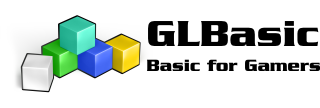@mentalthink : Me too!  Sorry - a combination of flu, work and leaving my Netbook in a taxi over the last week or so has left me been a bit out of touch ..
Sorry - a combination of flu, work and leaving my Netbook in a taxi over the last week or so has left me been a bit out of touch ..
Actually I've had no problems at all with the IGEP (apart from the slow I/O, but I'm not convinced that isn't the fault of the mini-SD card - also the initial setup can be a bugger), but thanks all the same.
@Kitty Hello : Any idea when the next point release will be out? I'm guessing it's waiting on the Android stuff?
Cheers,
Dave.
 Sorry - a combination of flu, work and leaving my Netbook in a taxi over the last week or so has left me been a bit out of touch ..
Sorry - a combination of flu, work and leaving my Netbook in a taxi over the last week or so has left me been a bit out of touch ..Actually I've had no problems at all with the IGEP (apart from the slow I/O, but I'm not convinced that isn't the fault of the mini-SD card - also the initial setup can be a bugger), but thanks all the same.
@Kitty Hello : Any idea when the next point release will be out? I'm guessing it's waiting on the Android stuff?
Cheers,
Dave.
